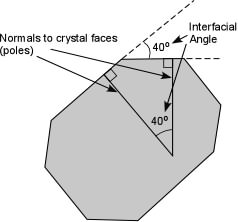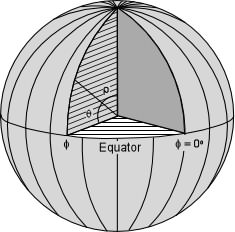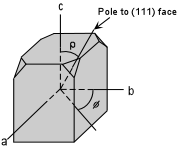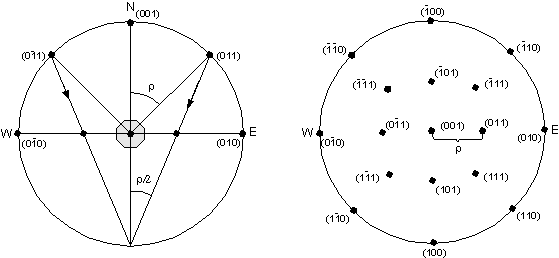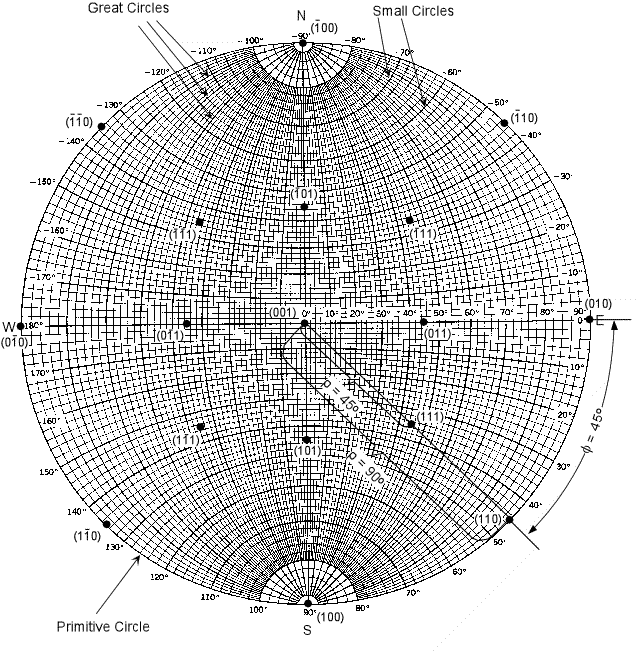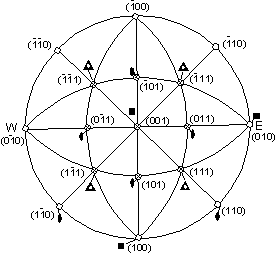| The pole to a hypothetical (010) face will coincide with the
b crystallographic axis, and will impinge on the inside of the
sphere at the equator.
We define this face (010) as having a Φ angle
of 0o. For any other face, the Φ
angle will be measured from the b axis in a clockwise sense in the
plane of the equator.
We define the ρ angle, as the angle between
the c axis and the pole to the crystal face, measured downward from
the North pole of the sphere. In the diagram shown here, a crystal
face has a ρangle measured in the vertical plane containing the axis of the
sphere and the face pole, and a Φangle measured in the horizontal
equatorial plane. Note that the (010) face has a ρangle = 90o. |
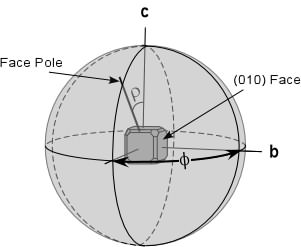 |
